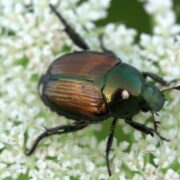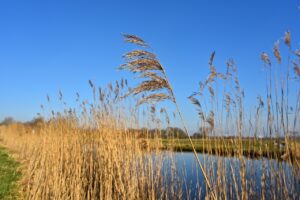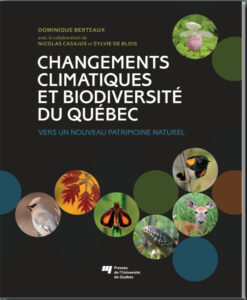A POSSIBLE NEW MEANING FOR INVASIVE EXOTIC SPECIES
Let’s travel from Asia to Quebec! A journey among many others that some native species undergo because of human action. The emerald ash borer is a good example of a species that has made this long journey in the past. Invasive exotic species (IES) can be plants, fungi or animals. Their successful establishment in a new habitat, however, requires several key factors. Each species thrives in a specific environment, interacting with other species to form a balanced ecosystem.
On the other hand, if a species is displaced and introduced elsewhere by humans, it may have a chance to colonize a new environment suitable for its growth. For a plant, if the weather conditions, drainage and soil type are similar, as well as the presence of suitable food, it will be able to establish itself comfortably. However, it disrupts the balance of an ecosystem that is not its own. It will grow and compete until it dominates the native species, since it has no predator. It is then called an invasive exotic species (IES).
Many IES are known to us from the media; Japanese beetle, Eurasian water milfoil, common reed. To learn more about IES in Quebec, visit the Sentinel detection tool (only in french). It is a directory of IES powered by the Ministry of Environment, Climate Change, Wildlife and Parks.
It presents the species of fauna and flora, from insects to mammals, aquatic and terrestrial plants. In addition, each IES is described with information on its habitat and spread in Quebec. Enough to become the expert on the subject in your circle of friends!
IN THE FUTURE, WHO WILL BE CONSIDERED AN IES?
The question raised in the book Climate Change and Biodiversity in Quebec Towards a New Natural Heritage is very relevant today, although the answer remains philosophical, meaning that it is open to debate, without a clear conclusion:
“Should a new species that arrives in Quebec on its own, due to global warming, be considered an exotic species?”
The important point of this question can be decided with this component of the Government of Canada’s definition: “An exotic species is a species introduced elsewhere than in its natural past or present range as a result of human activities.” For example, an uncleaned boat hold could transport zebra mussels into Quebec waterways. The transport of exotic fruits for human consumption carries a risk of establishment if a seed germinates in a local ecosystem. Climate change is another consequence of human activities. Species are confronted with a changing world that can push them to settle elsewhere.
As the climate warms, many native species find themselves with new territory further north to colonize. This phenomenon is called the northward shift! Their current range is getting warmer and living conditions are becoming less ideal. So, they are inclined to settle further north where the temperature, once too low, is now suitable to meet their needs. The comma butterfly (Hesperia comma) has seen its range move northward by 220 km in 20 years[1]. To read more, here is the link to the Futura article that mentions it (only in french). Thus, “due to human activities” native species are establishing themselves elsewhere than their natural range.
And you, what do you think? Do the species that are moving north remain native, or are they IES?
[1] Jean-Emmanuel Rattinacannou, Réchauffement : les espèces fuient vers le nord et en altitude. Futura https://www.futura-sciences.com/planete/actualites/climatologie-rechauffement-especes-fuient-vers-nord-altitude-32994/ (2011)






